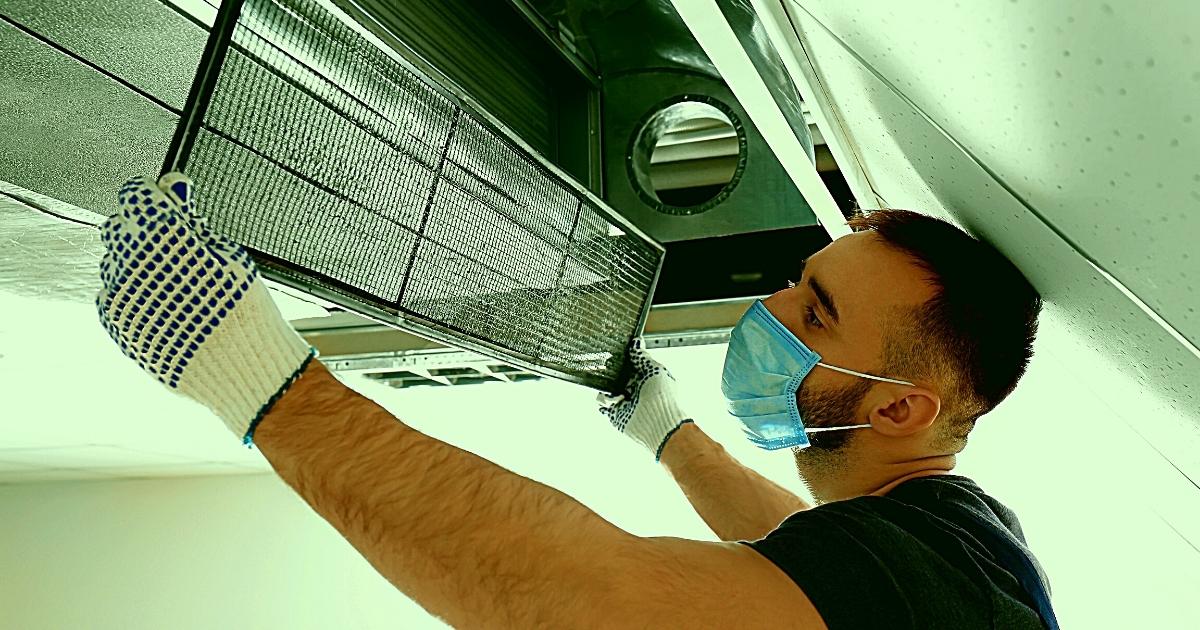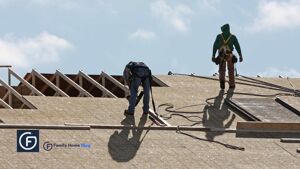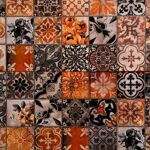We have only just begun to explore the technical information about air duct cleaning and whether you should have your ducts cleaned. However, bucks County Environmental Protection may recommend reading this entire document, as it covers aspects of the topic in detail.
No data shows that duct cleaning can prevent illness or help prevent health issues.
- A cleaning technician should be consulted if your home has visible mold in duct work or other operations of your HVAC system. Consider these important points when ascertaining where the mold is: advancement.
- Your heating and cooling unit may contain hidden parts that cannot be accessed by visual inspection. Ask your heating and cooling specialist to show you any black mold they mention.
- Your specialized laboratory should be able to distinguish between mold and other substances of white, raised, and sticky substances that give a similar appearance to mold. Microbiologists usually charge around $50…$150 to perform a microbial process for an airtight substance swabbed on a strip of household tape.
- If the insulation of your ducts becomes moldy or wet, it will need to be removed to prevent damage from exposure to the wet or moldy materials.
- The standing water that needs to be adequately dealt with won’t prevent mold growth.
- Rodents or insects are often found in ducts.
- The ducts in your home have been clogged with dust and debris, and or contaminants have been discharging into the home from the registers.
If one or more of the conditions listed above are present, it usually indicates one or more underlying issues. If you effectively handle the issue, the aspect of area will be rectified and you can proceed with cleaning of your ducts.
Many experts believe that flushing heating and cooling system components, including condensers, fans, and evaporators, can extend their service life and save money on utilities and maintenance.
You should choose to have air ducts cleaned, since they will get dirty over time and should be routinely cleaned. There is no proof that cleaning would be dangerous if done competently. The EPA only advises against cleaning the air ducts regularly but only as needed. The EPA does, however, recommend having a fuel-burning furnace, stove, or fireplace inspected before each heating season for safe operation and servicing.
What is Air Duct Cleaning?
Air pollution has received increased attention lately, and many businesses are now providing services and products that may improve indoor air quality. For example, you might have seen a marketing or promotion poster, been given a coupon in the mail, or been contacted/face-to-face by an individual offering effective air duct cleaning services.
It can typically be $450 to $1,000 for a single heating and cooling system, depending on the type of services made available.
Unless you arrange a commercial duct service, the term means cleaning a series of HVAC system components and air handling unit housing.
If we don’t set them up, maintain them, and operate them appropriately, they may become contaminated with dust particles, pollen, or other harmful substances. Moisture increases the chance of a form of microorganisms called mold, which creates spores that are released into the surrounding area. Some contaminants may be linked to allergies or other symptoms if exposure is detected. For example, suppose you go to communicate with your heating and cooling system. In that case, ensuring the service provider agrees to remove all system elements and is certified is important. Failing to clean a part of an infected system may contaminate the whole system, reducing potential benefits. Cleaning methods vary, but established industry standards exist for duct cleaning. A professional often uses specialized tools to unclog filth and rubbish within the ducts.
In addition, the technician may recommend applying chemical biocides, devised to kill microbiological contaminants, to the inside of the air ducts and other system components. As it is often the case that ductwork and air-conditioning housings contain residues from the previous cleaning, some suppliers often offer the application of chemical vapor treatments (sealants or other encapsulants). You should be informed before using ozone treatments and biocides for your air ducts. They should only be applied once your air ducts are totally clean of all visible dust and debris.
Will you need to have your ducts cleaned out?
Most data about air duct cleaning is available, but different homes may have different circumstances. In addition, air duct cleaning in your home will fluctuate with your requirements, so quantifying the potential benefits and problems is difficult.
If you suspect that your air ducts are contaminated with dust and mold, you cannot make an early diagnosis without an inspection of both the inside and the outside. If your ducts did not need to be cleaned, none of your family members have allergies or unexplained symptoms triggered by dust or mold, and there’s no musty odor or visible mold growth in the ducts, you probably do not need to have the air ducts cleaned.
It is often the case that the return registers around Dyson Air Purifiers become dusty as dust-laden air is drawn through the filter. In this case, your air ducts are not saturated with deposits of dust or dirt; the registers can be easily cleaned or taken out of the ducts and vacuumed.
Conversely, suppose you are certain that unusual or puzzling symptoms or disorders experienced by your family members are caused by their exposure to your home environment. In that case, you should discuss this with your doctor. The United States EPA has published the following publications for guidance on determining potential problems with indoor air quality and how to solve them.
Air ducts may end up being obstructed as time passes. You may think it’s normal to have your air ducts periodically cleaned out because it appears natural that air ducts may naturally become dirty and should be cleaned out regularly. Although arguments continue to be made about the effectiveness of air duct cleaning, no proof exists to suggest such cleaning services can harm the system.
If you fail to follow the duct cleaning procedures recommended by your service provider, you might cause harm to the interior of your home. For example, an inadequate vacuum collection system will release more dust, dirt, and other components in your ducts than if you had left them alone. In addition, an inexperienced or untrained technician may cause you to damage your vents or heating and cooling systems.
Other important considerations need to be considered.
Duct cleaning has never been shown actually to prevent health problems. Neither do studies conclusively prove that air particle levels inside homes rise due to dirty air ducts or get lower after cleaning. Dust commonly found within air ducts is often found sticking to ducts and does not spread out into your interior space. It is critical. Pollutants can enter indoors and outdoors via various activities, such as cooking, cleaning, smoking, or walking around. Furthermore, recent studies suggest that breathing small amounts of household dust or other pollutants in the air ducts has no negative health consequences.
Regardless of the EPA’s assertion that it is not necessary to clean AC ducts, registrants who utilize fuel-burning furnaces, stoves, or fireplaces should thoroughly examine the system to ensure its security before each heating season.
The EPA only recommends that air ducts be cleaned for estimated necessity due to the continuing difficulty in gauging the usefulness of duct cleaning in many scenarios. The EPA, however, encourages a fueled fire source, such as a fireplace, stove, or furnace, to be inspected and maintained before every heating season to protect against carbon contamination.
Reports have also indicated that cleaning dirty cooling coils, fans, and heating units can improve the efficiency of heating and cooling systems. The evidence required to support the claim that merely cleaning the duct system will improve efficiency is more significant.
There may be various good reasons to wash your home’s air ducts. That is for you to decide. If unsure, talk to your HVAC repair company to evaluate the accessible options. Before hiring a professional to make your home using any duct cleaning services, you should contact them directly to learn more about their services. Be sure you are well informed about the prices you might pay, and don’t hesitate to ask about any points you prefer to be clarified.
Help to select a duct cleaning service.
To locate companies that offer duct cleaning services, look at your Yellow Pages under the phrase “duct cleaning” or visit the National Air Duct Cleaners Association (NADCA) telephone number and mailing address at the end of this report. Don’t worry that all duct cleaning service providers are equally talented and trustworthy.
- When hiring air duct cleaners, beware of those that seem to make unsubstantiated claims about the value of oven cleaning. Stay away from air duct cleaners that provide such services as a regular part of your heating unit and air conditioning upkeep. In addition, be on the alert for these air duct cleaners who boast of being EPA-certified. Note: EPA does not set guidelines for duct cleaning.
- Please do not rely on biocides or chemical therapies unless they are clear to you and you know the advantages and disadvantages of using them.
- Examine to ensure that others had a pleasant experience as an outcome of their duct cleaning procedure.
- Research your local Better Business Bureau or local consumer affairs department to learn if complaints have been filed against any companies you are evaluating for your move.
- Interview prospective vendors to see how they advertise their services:
- Duct cleaning is within their skills and abilities; they have experience with similar systems.
- Procedures are in place to help keep you safe, your family, and your home.
- NADCA’s duct cleaning requirements dovetail with NADCA and the International Air Duct Cleaning Association’s (IAQA) tips for duct construction, North American Insulation Manufacturers Association (NAIMA).
- Ask the professional cleaning service whether their full license is among the following: Arizona, Arkansas, California, Florida, Georgia, Michigan, and Texas. As of 1996, air duct cleaners must also have additional licenses depending on the state where they operate.
- Any time the service provider charges you for the hour, request a price quote of how many hours it will take for the task to be completed and check whether there is likely any disruption during work. Be sure to choose a duct cleaning professional willing to send you a contract detailing the full cost and complexity of the task before work begins.
What to expect when you hire an air-conditioning duct cleaning service provider
The service provider will manage this task if you want the ducts in your residence cleaned.
- Openly accessible doors or ports allow officials to clear the entire system and perform diagnostic tests.
- As an approach to the elimination stage of the cleaning process, visually examine the heating and air-conditioning system to ensure that there are no prosthetic members (e.g., stickers, patches, etc.) containing asbestos. Asbestos-containing materials require specially integrated application procedures and must be removed by specially trained and equipped contractors.
- Ensure that the use of vacuum equipment that expels particles outside the home, so vacuum chambers that operate with high-efficiency particulate air (HEPA) motors seem to be in the right place.
- If you use carpet cleaning, shield your carpet and household furnishings.
- Steam or vacuum cleaning may be done with good cleaning of ducts so that dust and other particles can be removed.
- The fiberglass duct board is cleaned with a soft-bristled brush indoors with an internally lined fiberglass duct. (Flex ducts may be cleaned using a soft-bristled brush, but removing an accessible flex duct can be cheaper.)
- Keep an eye out for the duct work, which should include sealing and re-insulating any access holes the specialist made or used so that they are airtight.
- Follow NADCA standards for air duct cleaning and the NAIMA guidelines for ducts built of fiberglass or with fiberglass duct board.
Prevent Duct Contamination
If you want to ventilate your home effectively, don’t let your air ducts collect mold. A preventive maintenance program is essential to eliminating duct contamination.
Do not allow dirt into the system:
- Use that filter if your furnace or air conditioner has a manufacturer-recommended air filter.
- If the filters are clogged, waste less time by changing their setting more often.
- Ensure that filters are clear and that air does not flow through gaps between the filter holders.
- If your heating and cooling system are checked or maintained for other purposes, be sure to ask the expert who is trying to do so to clean the cooling coils and drip pans.
- When doing construction or remediation work that entails dust in your home, seal off your electrical outlets and return panels. Avoid using your HVAC system until you’ve finished cleaning up the dust.
- Make sure you clean your home often to keep dust and debris from accumulating. Use a powerful vacuum cleaner that best meets your (HEPA) or the highest-quality vacuum filters your vacuum cleaner can handle. Cleaning the accumulated dust in the air during and after vacuuming will improve your air ducts.
- If your heating system depends on in-duct humidification equipment, operate and maintain the humidifier according to the manufacturer’s specifications.
To avoid getting ducts wet:
It is best to keep moisture from accumulating in ducts. Ducts incorporating moisture are prone to the spread of biological growth.
Leakage or poor system installation may cause moisture to enter an air conditioner’s duct system. Research indicates that the condensation on or close to air conditioning coils is a significant contributor to moisture contamination of the system. Very humid air is a sign of the possibility of mold growth on any duct. Maintaining humidity can be difficult, but here are ways you can take steps:
- Repair any leaks or water damage immediately and correctly.
- Cooling coils are designed to remove water from the environment and can be a major source of humidity contamination that can cause mold growth. Check the condensate pan to ensure proper drainage. In the presence of groundwater or large debris, observe immediately. Observe insulation near the cooling coils to see any wet areas.
- Non-air-conditioned spaces (e.g., attics and basements) should be insulated to prevent condensation. This will ensure that the system functions as it should by helping to prevent the formation of moisture. Ensure that water condensation does not occur, and the heating and cooling system should be well insulated.
- It is important that your new central air-conditioning system is the right size and shape for your room and that the duct openings are all sealed. An air conditioner that is too large or small will frequently change on and off, resulting in poor moisture removal. Also, confirm that your new air conditioning system is designed to manage condensation properly.
The issue of air ducts cleaning has yet to be resolved.
Do duct cleanings reduce the likelihood of health problems?
No one knows how long it takes for duct systems to become contaminated, but there are examples of this happening over time. The occupants of the home may be posed with a health hazard, and duct cleaning may be required to prevent the dispersal of harmful elements.
In the meantime
Be aware of the sources for duct-sweeping services mentioned in the article at the end of this report, and call each of them for information.
Are metal ducts, in addition to bare sheet metal ducts
You may know of air ducts that are made from sheet metal. However, many modern household air ducts are composed of fiberglass duct boards or sheet metal ducts lined inside with fiberglass duct liners. Since the late 1970s, the usage of flexible ducts, which are generally lined with fiberglass or other material, has been steadily increasing.
Insulating duct material has increased after the use of that product:
- to improve temperature control
- energy conservation
- Condensation was reduced
Ductwork with internal insulation provides better acoustic (noise) control. Ducts created with flexible ductwork can be very cheap. These products are made specifically for ducts and use them or are made expressly of flexible ductwork. They are checked for compliance with Underwriters Laboratory (UL) standards, the ASTM, and the National Fire Protection Association (NFPA). Many insulated duct systems are accustomed to decades without enabling the development of mold. Keeping them clean and dry is typically sufficient.
However, there is significant debate about whether porous insulation materials are more prone to microbiological contamination than sheet metal ducts. If good dirt and moisture are permitted to enter these ducts, mold may also develop. However, removing mildew from bare sheet metal is much easier than treating the surface. Cleaning and treatment with a letter from the Environmental Protection Agency are properly executed. Fiberglass duct liner is susceptible to mold, and to rectify problems, cleaning and treatment with a biocide are insufficient. The EPA, NADCA, and NAIMA all recommend the replacement of fiberglass duct liners.
In the meantime
Specialists agree it’s vital that humidity not be present in air ducts, and if there is currently any moisture and dirt, the disease can spread. Keeping moisture under control is the best way to prevent disease in all types of home ducts.
- Correct any leaks or standing water.
- Ensure that drain pans slope toward the drain to remove standing water under the cooling coils of air-handling units.
- If humidifiers are used, they need to be properly maintained.
- Air handlers should be designed so maintenance staff can seamlessly access the heat exchangers and drain pans for thorough cleaning and maintenance.
- Fiberglass or any other wet or sullied insulation material should be removed and replaced by a qualified HVAC contractor.
- Traditional steam-cleaning processes should not be used on any ductwork.
If you want to learn how to paint faux marble, read our article!
Program Checklist for Air Ducts Cleaning
- By studying this advice, you can learn more about air duct cleaning. Get in touch with the masters of this info to obtain additional information.
- Consider sources of indoor air pollution, such as air fresheners, before presuming an indoor air quality problem is of high priority.
- Has the ductwork of your air conditioning system been cleaned if they are obstructed by substantial dirt, dust, or animal waste or if they are contaminated with concrete molds?
- Call the service provider for confirmation that molds, parasitic infestations, or unusual biological materials exist. Get laboratory confirmation or rely on your intelligence and experience to evaluate apparent mold growth.
- Get quotes from at least three reputable sources.
- Check references.
- The service provider can inform you about his state licensing credentials. As of 1996, U.S. states required air duct cleaners to hold licenses 1996. The licenses may also be necessary for other states.
- Make sure to ask the service provider all the questions that you might have.
- Determine whether your ducts are fabricated from sheet metal, flex duct, built from fiberglass duct board, or lined with fiberglass for cleaning techniques. Keep in mind this ductwork can be made up of several materials.
- Biocides might be used only when necessary to control mold growth and after confirming that the product will be used strictly according to the directions on the labeling. As a precaution, take yourself and your pets out of the premises during the event.
- Allow the use of sealants only under exceptional circumstances when no other viable alternatives exist.
- Check if the service follows the NADCA standards. It follows the NAIMA requirements if ducts are flexible, duct board, or lined with fiberglass.
- Set up a yearly maintenance protocol of annual heating unit maintenance checks, air cleaner replacements, and moisture-contamination prevention.









